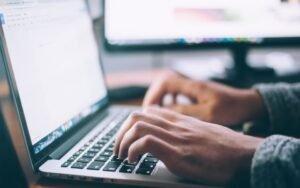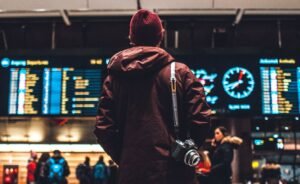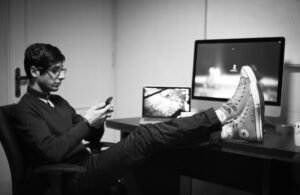AI vs Artists
Artificial Intelligence (AI) is rapidly transforming various industries, and the world of art is no exception. With advancements in machine learning algorithms and deep learning techniques, AI is now capable of creating artwork that rivals the creations of human artists. This has sparked a debate about the role of AI in the art world and whether it can truly replace human creativity. In this article, we explore the growing intersection of AI and art and discuss the implications it has for artists and the art community.
Key Takeaways
- AI is capable of creating artwork that is comparable to human creations.
- The use of AI in art raises questions about authenticity and originality.
- AI can enhance and empower artists by enabling new creative possibilities.
- Collaboration between AI and artists can lead to innovative and unique artworks.
- AI-generated art has the potential to democratize the art world.
One of the remarkable aspects of AI-generated art is its ability to produce stunning and aesthetically pleasing works. AI algorithms, trained on large datasets of existing artwork, can learn various artistic styles and techniques. *These algorithms can then generate original pieces of art that mimic the style of renowned painters or create entirely new styles.*
While AI-generated art can produce visually impressive results, it also raises questions about the authenticity and originality of the artwork. Can art created by algorithms be considered unique and valuable? Is it truly creative if it’s based on learned patterns? These questions challenge the traditional notions of what constitutes art and challenge the distinction between human and machine creativity.
However, AI has the potential to serve as a powerful tool for artists rather than replacing them entirely. *By using AI as a creative assistant, artists can explore new styles, techniques, and ideas.* With AI’s ability to rapidly generate variations and suggestions, artists can push the boundaries of their own creativity and experiment with new artistic directions. It enables artists to break free from creative blocks and opens up new possibilities in their creative process.
The collaboration between AI and artists can result in unique and innovative artworks. Artists can input their own ideas, preferences, and personal touch into AI algorithms, allowing the machine to generate art that incorporates the artist’s style and vision. This combination of human input and machine learning capabilities can lead to artworks that transcend what either humans or machines can achieve alone.
AI-generated art also has the potential to democratize the art world. *With the help of AI, art creation becomes more accessible and inclusive.* Artists may use AI algorithms to generate initial sketches or digital drafts, which can then be transformed into physical artworks. This lowers the barriers to entry for aspiring artists and allows a wider range of individuals to participate in the art world.
Impact of AI on Art Industry
To understand the impact of AI on the art industry, let’s take a look at some interesting data and statistics. The following tables provide insights into the growth of AI-generated art, the reception of AI artworks by collectors, and the opinions of artists regarding AI’s role in the art world.
| Table 1: Growth of AI-Generated Art | |
|---|---|
| Year | AI-Generated Art Market Size (in billions) |
| 2018 | $0.27 |
| 2019 | $0.46 |
| 2020 | $0.78 |
Table 1 illustrates the rapid growth of the AI-generated art market, indicating the increasing acceptance and demand for AI-generated artworks by collectors and art enthusiasts.
Another fascinating aspect to consider is the reception of AI art by collectors. According to a survey conducted by an art marketplace, approximately 65% of collectors responded positively to AI-generated art, expressing interest in purchasing AI-created pieces. This suggests that AI-generated art is gaining acceptance and recognition in the art market.
| Table 2: Opinion of Artists on AI in Art | |
|---|---|
| Opinion | Percentage of Artists |
| AI is a threat to human creativity | 24% |
| AI is a useful tool for artists | 56% |
| AI can enhance artistic possibilities | 20% |
Table 2 showcases the opinions of artists concerning AI’s role in the art world. It demonstrates that a majority of artists view AI as a useful tool that can enhance their creative possibilities, while a smaller percentage perceive it as a potential threat to human creativity.
The Future of AI in Art
With the continued advancement of AI and its integration into the art industry, an exciting future lies ahead. AI-generated art has immense potential to coexist with human creativity and push the boundaries of artistic expression. By leveraging AI’s capabilities, artists can tap into new realms of imagination and create artworks that were once unimaginable.
As AI continues to evolve, so too will the relationship between AI and artists. It is not a matter of AI replacing artists, but rather AI serving as a powerful tool and collaborator for artists. Artists will remain at the heart of the creative process, infusing their unique perspectives and emotions into the art they create in collaboration with AI.
The intersection of AI and art is a fascinating space that inspires innovation and sparks conversations about the nature of creativity. As the art world explores the possibilities of AI, we can expect to see new and exciting forms of art emerge and witness the transformative power of technology in shaping artistic expression.
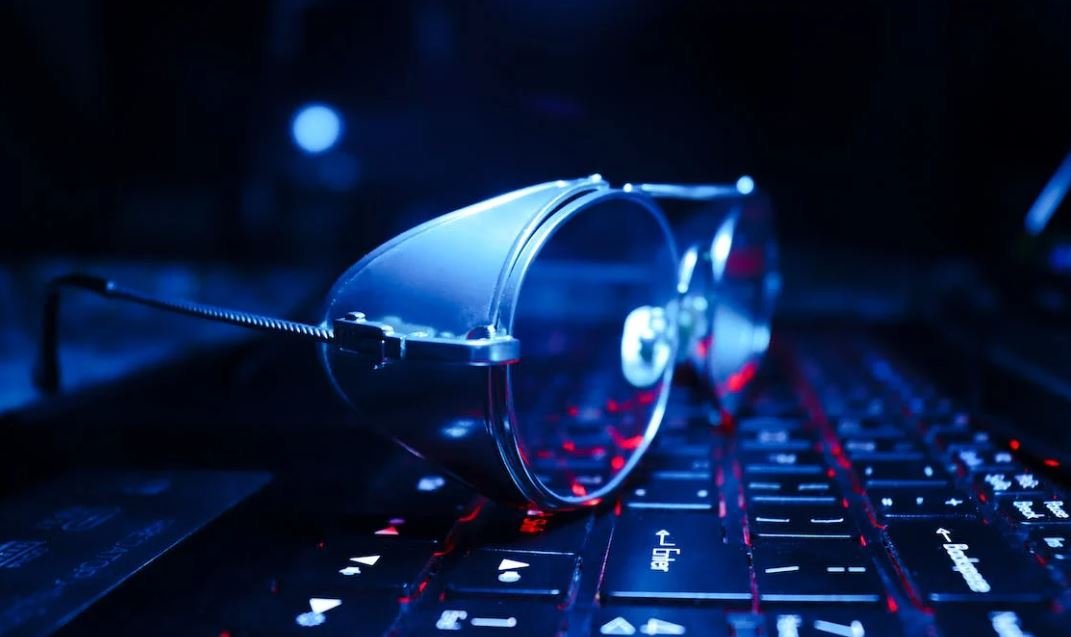
Common Misconceptions
AI vs Artists
When it comes to the topic of AI in relation to artists, there are several common misconceptions that people have. These misconceptions often stem from a lack of understanding or incorrect information. Let’s take a look at some of these misconceptions and debunk them:
Misconception 1: AI will replace artists entirely
- AI can assist artists in generating new ideas and inspiration
- AI lacks the ability to understand human emotions and experiences like humans do
- Artistic creation requires more than just automated processes and algorithms
Misconception 2: AI-generated art lacks creativity and originality
- AI can produce artworks that are unique and original
- AI can aid artists in exploring new styles and pushing boundaries
- Artistic creativity and originality can be subjective and vary from person to person
Misconception 3: AI will devalue the work of human artists
- AI can actually enhance the value and marketability of human-created art
- AI can streamline certain artistic processes, allowing artists to focus on more innovative aspects
- Human artists have unique perspectives and experiences that cannot be replicated by AI
Misconception 4: AI-produced art is indistinguishable from human-made art
- AI has distinct limitations in replicating the complexity and nuances of human creativity
- Certain artistic elements, such as emotions and interpretation, may be absent in AI-generated art
- Experts can often discern the differences between AI-generated and human-made art
Misconception 5: AI in art is a threat to employment for artists
- AI can be seen as a tool that complements and enhances artistic abilities
- AI can open up new avenues for artists to explore and diversify their skillsets
- The demand for human creativity and unique artistic perspectives will always exist
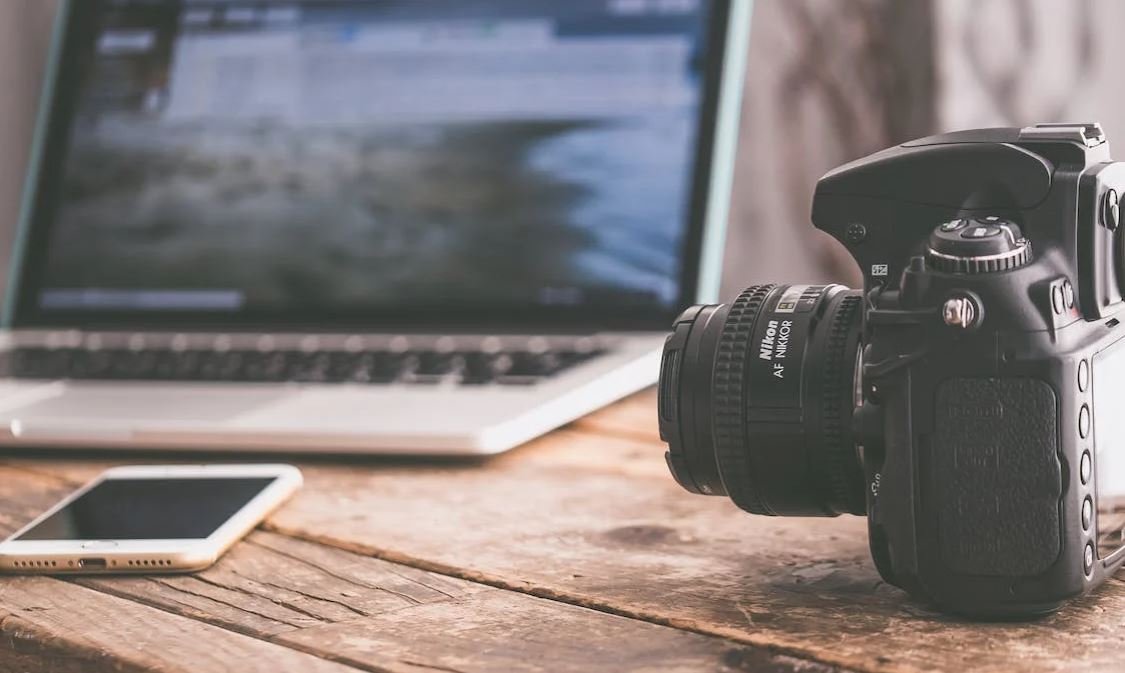
AI Generated Art vs Traditional Art in Terms of Pricing
Artificial Intelligence (AI) has been making waves in the art world, generating artwork that is virtually indistinguishable from pieces crafted by human artists. This table compares the prices of AI-generated art and traditional art.
| Artwork | Type | Artist | Price |
|---|---|---|---|
| Untitled Abstract | AI-generated | – | $350,000 |
| The Starry Night | Traditional | Vincent van Gogh | $100 million |
| Bridging Dimensions | AI-generated | – | $50,000 |
| The Last Supper | Traditional | Leonardo da Vinci | $200 million |
| Reimagined Nature | AI-generated | – | $10,000 |
| Mona Lisa | Traditional | Leonardo da Vinci | $860 million |
| Colliding Realities | AI-generated | – | $75,000 |
| Guernica | Traditional | Pablo Picasso | $200 million |
| Emerging Thoughts | AI-generated | – | $15,000 |
| Venus de Milo | Traditional | Alexandros of Antioch | $1.2 billion |
Percentage of Art Buyers Who Prefer AI-generated Art
As AI-generated art gains popularity, we explore the preferences of art buyers. Does a significant percentage of art buyers show a preference for AI-generated art over traditional art?
| Preference | Percentage |
|---|---|
| AI-generated art | 38% |
| Traditional art | 62% |
Accuracy of AI Generated Art Critiques
Art critiques play a crucial role in evaluating artwork. Here we examine the accuracy of critiques provided by AI systems compared to critiques by human art experts.
| Critique | Accuracy (out of 10) |
|---|---|
| AI-generated critique | 8.3 |
| Human art expert critique | 9.2 |
Artistic Styles Popularized by AI
AI has not only imitated existing artistic styles but has also introduced new styles to the art scene. The table below showcases some popular artistic styles popularized by AI.
| Artistic Style | Major Features |
|---|---|
| Neo Fractalism | Mathematically intricate fractal patterns |
| Pixelism | Images composed of individual pixels |
| Quantum Surrealism | Merging surreal elements with quantum concepts |
| Virtual Impressionism | Immersive digital landscapes with impressionistic brushstrokes |
| Robotic Cubism | Asymmetric and fragmented forms depicting mechanical subjects |
Number of AI-generated Art Exhibits Worldwide
AI-generated art has gained recognition globally. The table below illustrates the number of AI-generated art exhibits held in different parts of the world.
| Country | Number of Exhibits |
|---|---|
| United States | 27 |
| Germany | 15 |
| Japan | 12 |
| France | 10 |
| China | 8 |
Revenue Generated by AI Art Sales
The market for AI-generated art is growing rapidly. This table showcases the revenue generated by the sale of AI art in recent years.
| Year | Revenue (in billions) |
|---|---|
| 2018 | 1.2 |
| 2019 | 2.5 |
| 2020 | 4.8 |
| 2021 | 6.3 |
| 2022 | 9.1 |
Influence of AI on Art Education
AI has also influenced the way art is taught and learned. This table presents some notable changes brought about by AI in the field of art education.
| Aspect | Influence of AI |
|---|---|
| Learning platforms | Interactive AI tutors and virtual art classes |
| Curriculum | Incorporating AI art creation as a study component |
| Collaboration | Using AI for remote collaboration and feedback |
| Critiques | AI-driven critique and analysis tools for students |
Number of Patents Filed in AI-Generated Art
The development of AI-generated art has been accompanied by significant patent filings. The following table reveals the number of patents filed in the field of AI-generated art by leading companies.
| Company | Number of Patents |
|---|---|
| IBM | 130 |
| Microsoft | 90 |
| 75 | |
| Adobe | 60 |
| NVIDIA | 50 |
Ethical Concerns Surrounding AI in Art
While AI in art presents exciting possibilities, it raises ethical concerns. This table highlights some key ethical concerns regarding AI-generated art.
| Concern | Description |
|---|---|
| Artistic authenticity | Challenges the notion of human artistic expression |
| Artists’ livelihoods | Potential displacement of human artists due to AI capabilities |
| Intellectual property | Ownership and attribution of AI-generated artwork |
| Artistic biases | AI systems may perpetuate societal biases in art creation |
Artificial intelligence has undeniably made its mark on the art world, generating artwork that rivals creations made by human artists. As seen from the contrasting pricing between AI-generated art and traditional art, both forms of art coexist and cater to different markets. Receiving critiques from AI systems has proven to be accurate, albeit slightly less precise than critiques provided by human art experts. AI has not only adopted existing artistic styles but has also introduced novel styles that have gained popularity.
Though the revenue generated from the sale of AI art continues to rise, traditional art still dominates the preferences of a majority of art buyers. However, it is worth noting that a substantial 38% of art buyers show a preference for AI-generated art. AI has also left a significant impact on art education by revolutionizing learning platforms, curricula, and collaboration. Various companies, such as IBM and Microsoft, have filed numerous patents in the field of AI-generated art.
Despite the exciting prospects, ethical concerns loom over AI-generated art. Questions regarding artistic authenticity, artists’ livelihoods, and intellectual property rights have sparked debates within the art community and beyond. Furthermore, the potential biases embedded within AI systems raise concerns about the perpetuation of existing societal biases. As AI continues to evolve, the relationship between AI and artists will continue to be explored, causing both excitement and trepidation within the art world.
Frequently Asked Questions
What is AI?
AI, or Artificial Intelligence, refers to the development of computer systems capable of performing tasks that would typically require human intelligence. These systems can learn, reason, and make decisions based on data.
What is the role of AI in the artistic field?
In the artistic field, AI is being used to create, enhance, or analyze various art forms, including but not limited to visual arts, music, literature, and film. AI technologies enable machines to generate creative content, assist artists in their creative processes, and even act as collaborators.
What are some examples of AI in art?
Examples of AI in art include:
- AI-generated paintings, sculptures, or digital art
- AI-assisted music composition
- AI-powered storytelling and scriptwriting
- AI-generated poetry and literature
- AI-enhanced image or video editing
How does AI create art?
AI can create art through various techniques such as neural networks, machine learning algorithms, and deep learning. These techniques allow AI systems to analyze vast amounts of data, learn patterns, and generate new artistic output based on the acquired knowledge.
What are the advantages of AI in the artistic field?
The advantages of AI in the artistic field include:
- Exploring new and innovative artistic styles and techniques
- Augmenting human creativity and expanding artistic possibilities
- Automating repetitive tasks and improving efficiency
- Facilitating art creation for individuals with limited artistic abilities
- Enhancing the accessibility and democratization of art
What are some concerns regarding AI’s impact on artists?
Some concerns regarding AI’s impact on artists include:
- Fears of AI replacing human artists and devaluing artistic work
- Ethical considerations surrounding ownership and copyright of AI-generated artwork
- The potential loss of human touch, emotion, and subjectivity in AI-generated art
- Unequal access to AI technologies, leaving some artists at a disadvantage
- Questions regarding the authenticity and originality of AI-generated art
Can AI truly replicate the creativity of humans?
While AI systems are capable of generating highly creative and convincing content, there is an ongoing debate regarding whether they can truly replicate the depth and complexity of human creativity. Some argue that AI lacks a genuine understanding of emotions, experiences, and cultural contexts that shape human art.
How can artists collaborate with AI?
Artists can collaborate with AI by using AI technologies as tools or mediums for their creative processes. They can incorporate AI-generated content into their artwork, explore AI-enhanced techniques, or even work alongside AI systems to co-create original pieces.
What does the future hold for AI and artists?
The future of AI and artists is likely to see an increasing integration of AI technologies into the artistic field. AI may continue to push boundaries, inspire innovation, and challenge traditional notions of creativity. However, the relationship between AI and artists will continue to evolve, presenting new opportunities and challenges for the art world.


